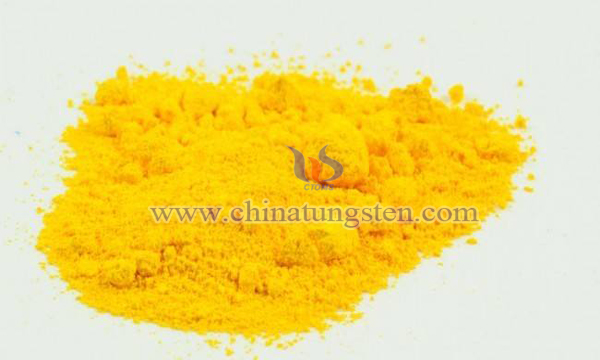Preparation Method of Cadmium Sulfide-Tungsten Trioxide Composite Photocatalyst
- Details
- Category: Tungsten Information
- Published on Tuesday, 16 July 2019 01:30
Cadmium selenide nanocrystal is the most widely studied and most promising II-VI semiconductor nanocrystals. Due to its important nonlinear optical properties, luminescent properties and other physicochemical properties, it is considered as a material with great and widely application in the future.
As an important semiconductor material, it has been widely used in various fields of light-emitting devices, laser and infrared detectors, infrared windows and nonlinear optical materials and photosensitive sensors. In particular, cadmium selenide absorbs visible light well, so it is the material of choice for photochemical catalysts.

Cadmium selenide is a direct bandgap semiconductor material with a band gap of 1.7eV. It has two crystal structures, cubic sphalerite and hexagonal wurtzite. The cubic phase structure is metastable and can only exist at lower temperature and high temperature. The time is changed to a hexagonal phase structure. However, cadmium selenide is extremely photo-corrosive and has poor light stability, which requires a material with a narrow band gap to enhance its performance.
Tungsten trioxide is exactly such kind of material. Some scholars have proposed a preparation method of a cadmium sulfide-tungsten trioxide composite photocatalyst, which can overcome the deficiency of cadmium tungstate performance. The synthesis of this material is as follows:
1) Preparation of tungsten trioxide
Weigh 150mg of tungsten boride powder and put it into stainless steel container containing 8mL of 2M hydrofluoric acid water and ethanol mixed solution (water, ethanol volume ratio of 3:4). After the reaction vessel was sealed, it was placed in an oven and heat-treated at 190 ° C for 36 hours. The reaction sample was taken out, washed with deionized water and dried at 80 ° C to obtain a tungsten hydrogen bronze crystal, and further heat treated at 700 ° C for 2 hours to obtain tungsten trioxide;
2) Dissolving cadmium chloride and 3-mercaptopropionic acid in deionized water according to a molar ratio of 1:1.65 to form a mixed solution, then adding tungsten trioxide to the mixed solution, and removing oxygen by nitrogen for 30 minutes, and then continuing to add sulfur. Sodium sulfate, mixed uniformly, adjusted to pH 9 with 1 mol / L sodium hydroxide solution, and reacted at 200 ° C for 1.5 hours;
3) centrifugation, washing and drying to obtain a cadmium sulfide-tungsten trioxide composite photocatalyst.
The obtained cadmium sulfide-tungsten trioxide composite photocatalyst has high photocatalytic activity and stability, and the finished product prepared above is used for photocatalytic degradation test of ciprofloxacin wastewater, and finally the comprehensive degradation rate is confirmed to be over 88%.
- Tungsten Oxide Manufacturer & Supplier, Chinatungsten Online: www.tungsten-oxide.com
- Tungsten News & Prices of China Tungsten Industry Association: www.ctia.com.cn
- Molybdenum News & Price: news.molybdenum.com.cn
- Tel.: 86 592 5129696; Fax: 86 592 5129797; Email: sales@chinatungsten.com



 sales@chinatungsten.com
sales@chinatungsten.com